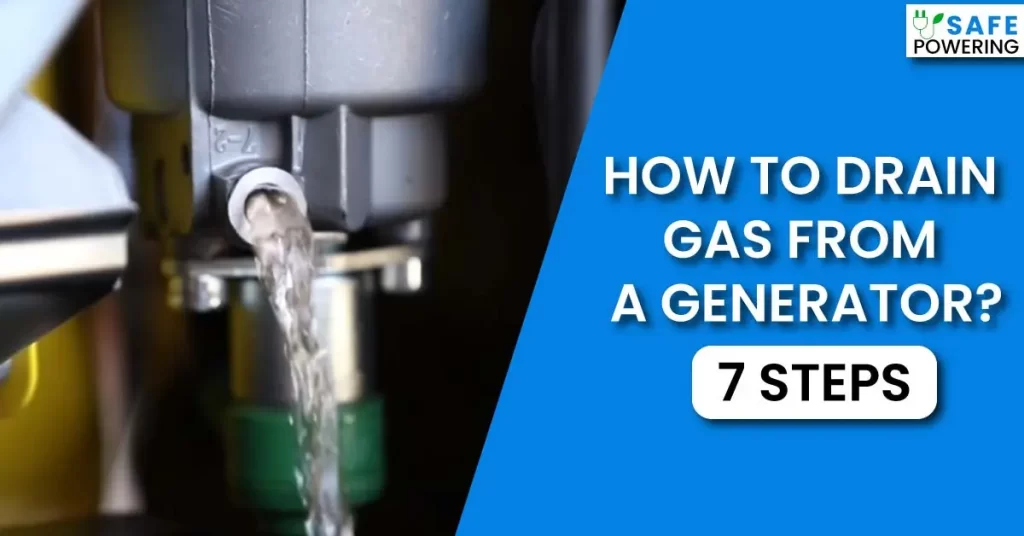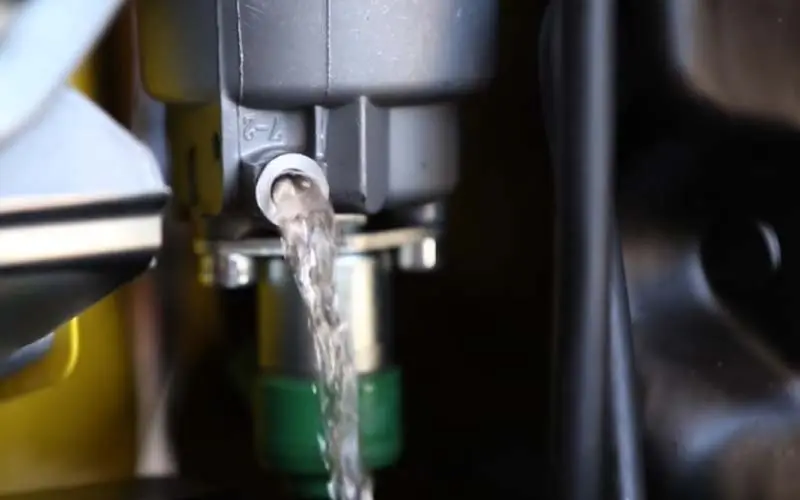How To Drain Gas From a Generator? – [7 Easy Steps]
Maintaining your generator is an essential step in ensuring its longevity and performance, and draining gasoline from the carburetor of your generator is a crucial part of this maintenance. It can help prevent issues such as corrosion, debris buildup, and clogging.
A clogged carburetor prevents the generator from starting because the fresh incoming air-fuel mixture couldn’t get into the combustion chamber. This will not only cause generator backfires, but you will also notice generator power surges and in the worst-case scenario, the generator won’t produce power at all.
In this article, I will provide you with a step-by-step outline of the process, as well as important safety considerations to keep in mind. So If you want to learn How To Drain Gas From the Carburetor of your generator in just 7 simple DIY steps using normal tools, read this article to the end!
Whether you are a seasoned mechanic or a novice, I believe this information will be valuable in helping you properly maintain your generator. Let’s get started!

How To Drain Gas From a Generator?
Below is the step-by-step guide to draining fuel from the generator’s carburetor.
How To Drain Gas From Carburetor in 7 Steps?
- Bring your generator to a well-ventilated area.
- Open the gas cap. It will allow the fresh oxygen to flow in.
- Switch off the fuel valve.
Now follow the steps mentioned below.
STEP 1: Prepare the Equipment
Before you start the process of draining the gas from the carburetor, make sure to turn off the generator and let it cool down. You don’t want accidental explosion when gasoline vapors contact with hot metal.
You will also need to gather the necessary tools, such as a wrench or pliers, a container to catch the gas, and a clean cloth to wipe down the carburetor.
STEP 2: Locate the Carburetor
The carburetor is typically located near the engine and is connected to the air intake and fuel supply lines. Familiarize yourself with the location of the carburetor so that you can easily identify it.
Recommended Guide: Step-by-step guide to cleaning a generator’s carburetor.
STEP 3: Locate the Drain Valve
The drain valve is usually located at the bottom of the carburetor and can be easily identified by its shape and location. This is where you will be draining the gas from.
STEP 4: Drain the Gas

Using the wrench or pliers, carefully turn the drain valve counterclockwise to open it and allow the gas to drain into the container. Make sure to hold the container underneath the valve to catch any gas that may spill.
STEP5: Close the Valve
Once all the gas has drained, use the wrench or pliers to turn the drain valve clockwise to close it. This will prevent any further gas from draining.
STEP 6: Clean the Carburetor
Use a clean cloth to wipe down the carburetor and surrounding areas to remove any residue and prevent corrosion. Make sure to thoroughly clean the area around the drain valve, as well.
STEP 7: Dispose of the Gas
Properly dispose of the drained gas by following local regulations and guidelines. This will help keep the environment safe and prevent any potential harm. You can also burn it if you want to.
How to Drain Gasoline From the Generator Tank?
Draining gasoline from a generator tank is a simple process that can be done quickly and easily. Follow these steps to safely drain gasoline from your generator tank:
- Turn off the generator and let it cool down for a few hours. This will ensure that the gasoline has settled and is not hot, which can be dangerous.
- Locate the fuel valve on the generator. It is usually located on the bottom of the tank and is a small knob or lever.
- Turn off the fuel valve by turning the knob or flipping the lever. This will stop the flow of gasoline from the tank to the engine.
- Place a container under the fuel tank to catch the gasoline. Make sure the container is clean and dry.
- Locate the fuel cap on the tank and remove it.
- Tilt the generator slightly to allow the gasoline to flow out of the tank and into the container.
- Once all the gasoline has drained, replace the fuel cap and dispose of the gasoline properly according to your local regulations.
- To ensure that all the gasoline has been drained, turn on the generator for a few seconds. This will burn off any residual fuel that may still be in the system.
- Turn off the generator and repeat the process if necessary until no gasoline comes out of the tank.
Recommended Read: How To Transport A Generator?
TIPS AND TRICKS
For inverter generators, there will be a screw at the side of the carburetor which is called the fuel drain screw. That same fuel drain screw will be located at the bottom of the carburetor for traditional generators.
Safety Precautions
It is important to follow safety guidelines when working with gasoline, as it is flammable and can cause harm if not handled properly.
Make sure to store the gasoline in a safe and secure location, away from any sources of heat or sparks. Additionally, always wear protective gear, such as gloves and safety glasses, when working with gasoline.
In conclusion, draining the gas from the carburetor is a crucial step in maintaining your generator.
By following these simple steps and keeping safety in mind, you can help ensure that your generator runs smoothly and efficiently for years to come. If you have any doubts or concerns, consult your owner’s manual or a professional mechanic.
You can also read these safety precautions if you want to dig deep.

Fareed, the highly skilled electrical expert, boasts 5 years of extensive experience in proficiently maintaining, repairing, diagnosing, and installing a diverse range of electrical systems.
